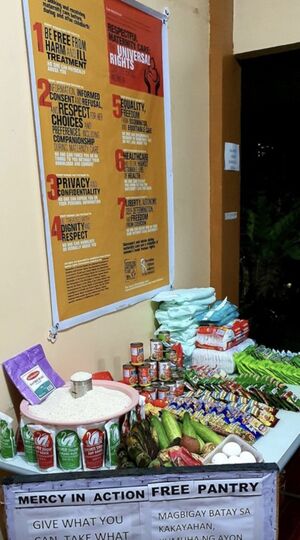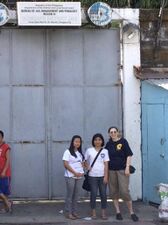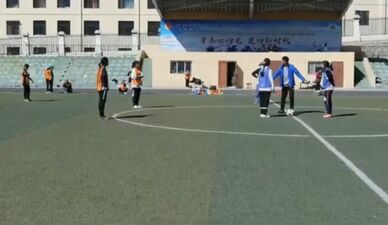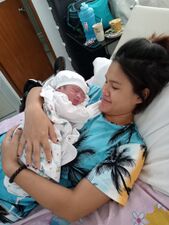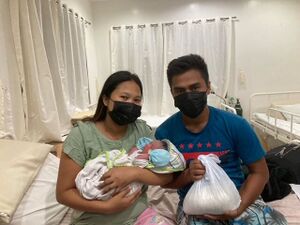Help Pregnant Patients during Coronavirus Pandemic: Difference between revisions
No edit summary |
(Updated solutions) |
||
| Line 18: | Line 18: | ||
=Project Gallery= | =Project Gallery= | ||
|Problems=99093 | |Problems=99093,202596 | ||
|Solutions=202599 | |||
|organization_id=39897 | |organization_id=39897 | ||
|Region=Philippines | |Region=Philippines | ||
Revision as of 20:58, 21 June 2023
| Organization | Mercy In Action Vineyard, INC |
|---|---|
| Region | United States |
| Website | Website |
| N/A | |
| ProjectLeader | Vicki Penwell |
| Linked Problems & Solutions
|
|---|
Midwives are front-line workers in the Coronavirus pandemic. Mercy In Action operates clinics & birth centers in the Philippines at no charge to the patients and will continue to stay open, though our costs are going up exponentially for food for patients, medicines, gasoline to drive our ambulance, and PPE for staff. With the shutdown of public transportation jeepneys, we are giving rides to each woman in labor, & bringing food to locked-down pregnant women. We are in place to help the poor now
Challenge
The coronavirus pandemic has caught most of the world off guard. Fortunately, Mercy In Action already provides for care of women and babies during pregnancy, labor & delivery, & postpartum recovery, We expect more patients for birth since hospitals will be full of sick patients. Our resources are being stretched now during the lockdown; we must buy food for lock-down patients who are needy, & drive women to the birth center in labor because there is now no public transportation jeepneys running.
Long-Term Impact
The potential long-term impact is enormous if we can stay open during this pandemic, no matter how long it takes. We are an out-of-hospital birthing facility that has the potential to take a huge burden off our local hospitals should they become overwhelmed with sick patients and become unable to handle normal childbirth in a safe manner. We have the potential to help thousands of women give birth safely during this pandemic if we have the resources to feed them and safely deliver their babies.
References
Project Gallery
